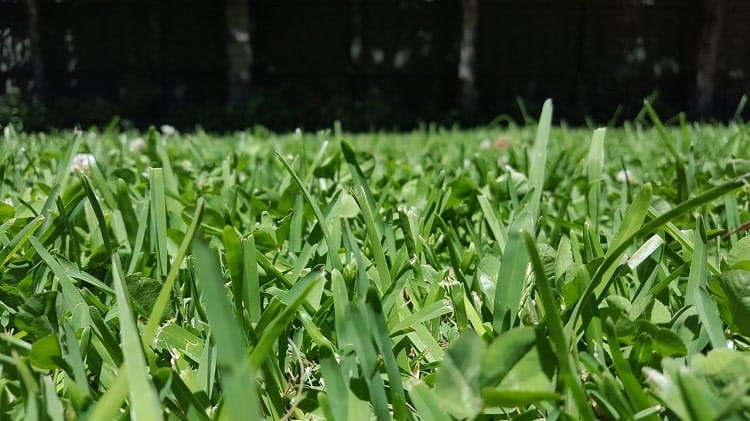Taking care of the lawn is something that some homeowners dread. Others look forward to making their lawns look as nice as possible. Of course, to make your lawn look great, you need to know and understand the different options to get the best results.
Florida tends to be a humid climate but not all parts of Florida are exactly the same when it comes to growing grass. If you’re planning ideas and options for your lawn, take a look at this guide to help you better understand the types of grass in Florida.
Is Grass Difficult to Maintain in Florida?
Grass anywhere can be challenging to maintain if you don’t know the proper way to do so. There are certain specifics like the best time to plan and even proper mowing and watering techniques that can make all of the difference.
Some types of grass are harder to maintain and harder to grow than others. If you know the types of grass and what it takes to make them grow, this might help you be more successful with your grass efforts.
It’s important to understand what a certain type of grass needs and how it will work with the Florida weather and climate as well. It’s also important to understand the care and maintenance and whether or not you will be able to deliver the demands of the grass!
Here are some important tips that will help you be successful with growing grass in Florida:
- Proper mowing is one of the best things that you can do. Be careful not to mow the grass too short as it needs to be able to grow to take root. Most grass should be allowed to stay at 1-2 inches tall after mowing.
- Proper watering is another important factor. Your lawn needs irrigation and it needs water but you’ve got to be careful not to over water it. This means watching the weather and not watering manually during rainy seasons.
- Things like fertilizer and pesticides can be useful as well. Fertilizer gives your lawn important nutrients while pesticides help keep harmful insects at bay. Be mindful of these choices but use them to help maintain a healthy lawn.
- Learn the signs of the lawn that communicate its needs. For example, if your grass is beginning to fold in half, this is a sign that it doesn’t have enough water. There are several slight signs like these that you can look for.
If you make sure you choose your grass wisely and really understand how to care for it properly, it shouldn’t be too difficult to maintain in Florida.
What is the Best Grass to Grow in Florida?
The best grass to grow will really depend on your location, the style that you are going for, and the maintenance that you want to be responsible for. There are several types of grass that do well in Florida so you have more than one option to choose from.
The most common grass used in Florida is St. Augustine grass. It’s a popular choice because it’s pretty easy to care for. St. Augustine grass even likes the heat and sunshine so you can see why it would thrive in a Floridian environment.
There are several other great options, which we will go through shortly. In short, you want to be sure that whatever grass you choose can handle the climate in Florida and in your specific area.
St. Augustine grass that we just mentioned has several different types to choose from. However, you really can’t go wrong with any of the St. Augustine grasses.
7 Types of Grass in Florida
While you might find any number of grasses in Florida, they don’t all thrive or do well in the environment. This next section is designed to help you understand the common types of grass in Florida, as well as how they will do in Florida. We’ve also shared some basic information about each type of grass to help you out.
Check these out.
1. St. Augustine Grass
We mentioned earlier that St. Augustine grass is probably one of the most popular types of grass in Florida. It’s a fan favorite for sure because it loves sunshine. It does just fine with all of the heat, sun, and humidity that you will subject it to in Florida.
St. Augustine grass does come in several different varieties. Here are some of the top forms for Florida.
- CitraBlue St. Augustine
- Palmetto St. Augustine
- Floratam St. Augustine
These are just some popular choices. Floratam St. Augustine is a turf-style option and it’s probably the most used for residential lawns. It can be more susceptible to weeds or pests than some of the other varieties.
St. Augustine is a popular choice because it loves heat and isn’t really bothered by drought. In addition, salt doesn’t hurt it. Since Florida is surrounded by ocean and saltwater, this can be pretty helpful when trying to grow your grass.
It grows quickly and will need cut pretty regularly. It’s usually found in sod or plugs.
2. Bahiagrass
Bahiagrass is planted through seeds. If you live in a part of Florida that has a lot of sand or is very hot and dry, this is a great choice. It really likes sandy soil and it really likes lower pH levels as well.
This grass option is a top choice, particularly for large coverage, because you don’t have to do much to grow it and maintain it. In fact, you won’t even mow this type of grass as much as others. Bahiagrass is the odd grass that needs to be allowed to grow to approximately 3-4 inches.
Bahiagrass is low maintenance. You don’t need to worry about extensive fertilization, watering, or irrigation. It needs very little water to grow and it’s the same for fertilizer. If for some reason the climate or weather isn’t ideal for growth, this grass just goes dormant. It comes back to life when it recognizes a welcoming environment.
On the downside, Bahiagrass can get weeds in it, which may or may not bother you. If you happen to go through a rainy season, this could also be hard on it since it prefers dry weather.
3. Bermuda Grass
Bermuda grass is another popular option. It looks a lot like normal grass to people and it’s overall easy to care for. Some people love it because you don’t have to worry as much about things like weeds or pests. You will see it a lot on golf courses because of the easy maintenance and the nice visual.
Bermuda grass is usually planted using seed or even sprigs. It grows quickly so it will need to be mowed regularly. The ideal height of the grass is about 1-2 inches. The nice thing about Bermuda grass is it’s not picky about the soil. It works with just about any type of soil.
Once Bermuda grass starts growing, it tends to invade. This could be problematic if you have a flowerbed or garden that you don’t want Bermuda grass in. You just might have to be more proactive in keeping it at bay if you happen to have those!
You will need to plan on watering probably weekly and then of course mowing as well.
4. Centipede Grass
Centipede grass is not as popular as these other choices because it is more limited on the areas it will thrive in. However, it’s a turf-style grass that can work really well in Southern parts of Florida.
Centipede grass likes sand and it likes acidic soil, making it a good fit for areas near the beaches. This grass is really pretty easy to take care of if you’re in a location that it likes. Its ideal height is about 1-2 inches and it really doesn’t grow all that quickly, which means you may not have to mow as often.
The downside is that centipede grass doesn’t like a lot of foot traffic so it works best in places that aren’t going to have feet trampling it all of the time.
5. Zoysia Grass
Zoysia grass is very unique because it tends to be a darker green color. The shade is medium to dark so it’s not brilliantly bright and looks pretty natural when it grows. This type of grass likes the sun and the shade.
Zoysia grass is incredibly low maintenance. You can find it in sod, seed, or plug options. Once you get it growing, you won’t have to babysit it. It also doesn’t mind foot traffic so it’s popular for places like lawns, golf courses, and popular spaces.
You won’t have to water it a ton, you won’t have to fertilize it a ton, and you won’t even have to mow it a ton. Zoysia grass grows fairly slowly and needs maintained at about 1-2 inches of height.
6. Buffalo Grass
Buffalo grass is planted using seeds most of the time. The seeds do have to be laid pretty heavily to get an even focus and full grass layer. This grass is actually known for its color, which is almost blue-green. The leaves are unique with a slight curl to them that is pretty attractive.
While it has some positives, like handling high heat and not being picky on soil, it also is picky about its shade levels and prefers not a lot of foot traffic. It’s great for some places but may not work in all of Florida.
Buffalo grass doesn’t like the cold. This isn’t usually a problem in Florida, particularly in Southern parts of the state, so you will most likely be able to enjoy its vibrant color all year long. It doesn’t need a lot of watering and just needs to be mowed to be kept anywhere from 1-3 inches tall.
7. Seashore Paspalum
This particular type of grass is less common but could be a good choice in some of the coastal areas. It’s popular for golf courses and sometimes even lawns. It’s becoming more popular because it isn’t bothered by the salt and not picky about the water it receives either.
This does have to be planted with sod first and it very much prefers warm weather but it’s not bothered by rainfall so it’s pretty versatile. We like this choice for those tropical locations in Florida.
Other than that, just know the weed control and pest defense that won’t harm your grass and this one grows nicely.
Final Thoughts
There are a lot of different types of grass that really do pretty well in Florida. You might even be surprised at how some of these grasses love salt or sand and can really look amazing any time of year.
Before you choose your grass, consider your climate, the shade, and even the soil. These will help you make sure that you get a type of grass in Florida that will work well for you!
Read our related grass guide articles:
- 11 Types of Grass in Texas
- 9 Types of Grass in Alabama
- 10 Types of Grass in California (& 5 Lawn Alternatives)
- 10 Types of Grass in Arizona (With 3 Lawn Alternatives)
- 19 Types of Grass in Georgia
- 4 Types of Grass for Michigan Lawns

Jamie is the founder of The Backyard Pros. When he was 15 years old he started working at a garden centre helping people buy plants, gardening products, and lawn care products. He has real estate experience and he is a home owner. Jamie loves backyard projects, refinishing furniture, and enjoys sharing his knowledge online.



